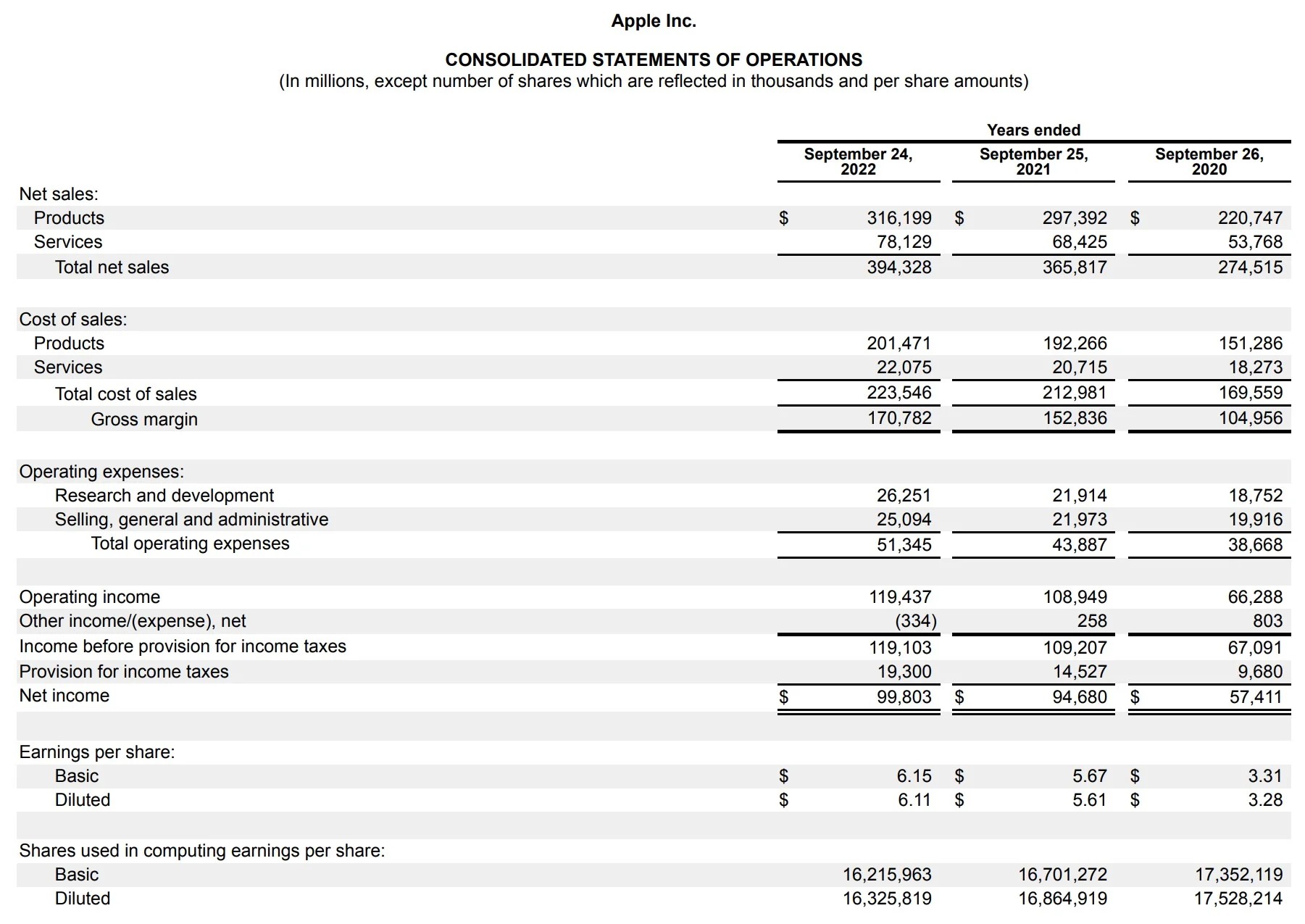Home>Finance>What Is The Difference Between Asset Management And Investment Management?


Finance
What Is The Difference Between Asset Management And Investment Management?
Modified: December 30, 2023
Discover the key distinctions between asset management and investment management in the world of finance. Learn how these two concepts play a crucial role in managing your financial portfolio.
(Many of the links in this article redirect to a specific reviewed product. Your purchase of these products through affiliate links helps to generate commission for LiveWell, at no extra cost. Learn more)
Table of Contents
- Introduction
- Definition of Asset Management
- Definition of Investment Management
- Key Objectives of Asset Management
- Key Objectives of Investment Management
- Differences in Scope
- Differences in Focus
- Differences in Strategies
- Differences in Accountability
- Similarities between Asset Management and Investment Management
- Conclusion
Introduction
When it comes to managing financial assets, two terms often come up: asset management and investment management. While they may sound similar, there are distinct differences that set them apart. Understanding these differences is crucial for individuals and businesses to make informed decisions about their financial strategies.
Asset management refers to the professional management of various types of assets, such as stocks, bonds, real estate, and even artwork. The primary goal of asset management is to preserve and grow the value of these assets over time. On the other hand, investment management focuses specifically on the management of investment portfolios, aiming to maximize returns for clients.
Both asset management and investment management are essential components of the financial world, but their objectives, scopes, and strategies diverge in significant ways. This article will explore the key differences between asset management and investment management, shedding light on their respective roles and helping readers gain a better understanding of these important financial concepts.
Definition of Asset Management
Asset management, also known as portfolio management, is the professional management of various types of assets owned by individuals, businesses, or organizations. These assets can include stocks, bonds, real estate, commodities, cash, and even intellectual property. The purpose of asset management is to optimize the value of these assets while ensuring their safety and security.
Asset management involves a wide range of activities. It starts with a thorough analysis of the assets owned by the client, taking into account their financial goals, risk tolerance, and time horizons. Based on this analysis, the asset manager will develop a tailored investment strategy to achieve the desired objectives.
Asset managers are responsible for making investment decisions on behalf of their clients. They conduct extensive research on various asset classes, sectors, and individual securities to identify the most promising investment opportunities. They also consider factors such as market trends, economic conditions, and regulatory changes to make informed decisions.
In addition to making investment decisions, asset managers also monitor the performance of the assets and make adjustments when necessary. They constantly evaluate the portfolio’s performance, rebalance allocations, and may even make strategic changes to optimize returns and manage risk.
Moreover, asset management involves regular reporting to clients, providing them with updates on the performance of their assets, any changes made to the portfolio, and overall investment strategy. This transparency allows clients to stay informed and make informed decisions about their financial future.
Asset management is typically provided by professional firms that are registered and regulated by financial authorities. These firms employ highly skilled and experienced asset managers who possess deep knowledge of various asset classes and financial markets. They adhere to strict regulations and ethical guidelines to ensure the best interests of their clients are protected.
Definition of Investment Management
Investment management is a specialized area within the broader field of asset management. It focuses specifically on the management and administration of investment portfolios. Investment managers, often referred to as portfolio managers, are responsible for making investment decisions on behalf of their clients to maximize returns while managing risk.
Investment management involves the selection and allocation of investments across different asset classes, such as stocks, bonds, mutual funds, and alternative investments. The objective is to build a well-diversified portfolio that aligns with the client’s financial goals, risk tolerance, and investment horizon.
Investment managers analyze various investment opportunities to identify assets that have the potential to generate attractive returns. They conduct in-depth research on individual companies, assess their financial health, evaluate market trends, and consider macroeconomic factors that may impact investment performance.
Once an investment strategy is established, investment managers continuously monitor the portfolio’s performance. They track the investments, assess the risk-reward tradeoff, and make adjustments as needed. This active management approach allows them to take advantage of market opportunities and mitigate potential losses.
Investment managers also focus on asset allocation, which involves determining the optimal allocation of investments across different asset classes. By diversifying investments, they aim to reduce the impact of market volatility and potential losses. This strategic asset allocation is crucial for optimizing returns while managing risk.
Furthermore, investment managers provide regular reports to clients, offering insights into the performance of their investment portfolios. These reports highlight the progress towards financial goals, any changes made to the portfolio, and the investment strategy going forward. This transparent communication helps clients stay informed and make well-informed decisions.
Investment management services are commonly provided by financial institutions, including investment firms, banks, and wealth management firms. These firms employ skilled investment professionals who possess a deep understanding of financial markets, economic trends, and investment strategies. They adhere to regulatory requirements and ethical guidelines to ensure the best interests of their clients are prioritized.
Key Objectives of Asset Management
Asset management encompasses a set of key objectives that drive the decision-making process and guide the actions of asset managers. These objectives are geared towards optimizing the value of assets and ensuring their effective management. Here are the primary objectives of asset management:
- Preservation of Capital: Asset management aims to protect and preserve the value of assets. It involves minimizing the risk of capital loss by implementing strategies that prioritize safety and security. Asset managers focus on investing in assets with a lower risk profile to provide stability and mitigate potential losses.
- Growth of Assets: One of the crucial objectives of asset management is to grow the value of assets over time. Asset managers identify investment opportunities that have the potential to generate attractive returns while considering the risk appetite of their clients. By implementing effective investment strategies and continuously monitoring the portfolio, asset managers strive to maximize the growth of assets.
- Income Generation: Asset management also aims to generate a consistent stream of income from the assets. Depending on the client’s financial goals, asset managers may include income-generating assets, such as dividend-paying stocks, interest-bearing bonds, and rental properties, in the portfolio. This objective is especially important for clients seeking regular income or retirees relying on their investment portfolio for living expenses.
- Risk Management: Asset management involves assessing and managing various risks associated with investment portfolios. Asset managers strive to strike a balance between risk and return by diversifying investments across different asset classes and sectors. They implement risk management techniques, such as setting stop-loss orders, hedging strategies, and monitoring market conditions, to minimize the impact of potential risks on the portfolio.
- Tax Efficiency: Asset managers also focus on optimizing the tax efficiency of investments. They utilize strategies like tax-loss harvesting, which involves selling underperforming investments to offset capital gains and minimize the tax liability. By implementing tax-efficient investment strategies, asset managers aim to maximize after-tax returns for their clients.
By pursuing these key objectives, asset management aims to provide clients with a well-managed investment portfolio that aligns with their financial goals, risk tolerance, and investment horizons. Asset managers work diligently to ensure the effective growth, preservation, and income generation while managing risks and optimizing tax efficiency.
Key Objectives of Investment Management
Investment management is driven by a set of key objectives that guide portfolio managers in making investment decisions and managing investment portfolios. These objectives are designed to maximize returns for clients while effectively managing risk. Here are the primary objectives of investment management:
- Maximize Return on Investments: The primary objective of investment management is to generate the highest possible returns on the client’s investment portfolio. Investment managers conduct thorough research and analysis to identify opportunities that have the potential for attractive returns. They aim to outperform relevant benchmarks and achieve superior performance for their clients.
- Strategic Asset Allocation: Another key objective of investment management is to determine the optimal allocation of assets across different asset classes. This involves considering the client’s financial goals, risk tolerance, and investment time horizon. Investment managers strategically allocate assets to diversify the portfolio and balance the risk-reward tradeoff, aiming to maximize returns while managing risk.
- Active Portfolio Management: Investment managers actively monitor and manage investment portfolios to optimize returns and manage risk. They continuously assess the performance of investments, make timely adjustments, and take advantage of market opportunities. Active portfolio management allows investment managers to adapt to changing market conditions and potentially outperform the market.
- Risk Management: Investment management focuses on effectively managing the risk associated with investments. Investment managers employ various risk management techniques, such as diversification, asset allocation, and hedging strategies, to mitigate potential losses. They analyze and monitor market trends, economic indicators, and industry-specific factors to assess and manage investment risks.
- Liquidity: Investment managers prioritize maintaining adequate liquidity within portfolios. This involves ensuring that there is sufficient cash or liquid assets readily available to meet anticipated or unforeseen financial obligations. By managing liquidity effectively, investment managers can take advantage of investment opportunities and meet client needs while maintaining a balanced and well-functioning investment portfolio.
The key objectives of investment management are aligned with the client’s financial goals and risk appetite. Investment managers strive to achieve attractive returns, effectively allocate assets, actively manage portfolios, mitigate risks, and maintain liquidity. By pursuing these objectives, investment managers aim to create value and deliver successful investment outcomes for their clients.
Differences in Scope
Asset management and investment management have distinct scopes and areas of focus that differentiate their functions within the financial landscape.
Asset management encompasses a broader scope as it involves the management of a wide range of assets owned by individuals, businesses, or organizations. These assets can include stocks, bonds, real estate, commodities, and cash. Asset managers are responsible for analyzing, acquiring, and managing these assets, with the primary goal of preserving and growing their value over time.
On the other hand, investment management has a narrower focus and is dedicated specifically to managing investment portfolios. Investment managers concentrate on making investment decisions and allocating assets across different asset classes, such as stocks, bonds, and mutual funds. Their objective is to maximize returns for their clients within the specified risk parameters.
The scope of asset management extends beyond just investments and includes other valuable assets like real estate properties, fine art, collectibles, or intellectual property. Asset managers evaluate and manage these assets alongside financial investments to ensure their effective utilization and appreciation.
Furthermore, asset management involves considerations beyond just monetary returns. Asset managers take into account factors like risk management, tax planning, estate planning, and liquidity needs. They adopt a holistic approach to maximize the overall value and utility of the assets under their management.
Investment management, on the other hand, focuses solely on managing the investment portfolio to achieve the highest possible returns. Investment managers conduct extensive market research, assess financial performance indicators, and make investment decisions based on their analysis.
In summary, while asset management has a broader scope that encompasses managing diverse types of assets, investment management specializes in the management of investment portfolios. Asset management takes a comprehensive approach, considering various assets and non-financial factors, while investment management hones in on investments and financial performance to maximize returns within specified risk parameters.
Differences in Focus
Asset management and investment management diverge in their specific areas of focus, reflecting the different priorities and objectives of each practice.
Asset management places emphasis on the overall management of various types of assets owned by individuals, businesses, or organizations. This includes not only financial investments such as stocks and bonds but also a wide range of tangible and intangible assets like real estate, collectibles, intellectual property, and other valuable possessions. Asset managers take a holistic approach, focusing on preserving and growing the value of these assets over time.
Asset managers focus on factors such as risk management, tax optimization, estate planning, and liquidity needs. They take into consideration the client’s broader financial position and goals, paying attention to non-financial assets and strategies that align with the client’s overall wealth management needs. The goal of asset management is to optimize the client’s entire asset portfolio, ensuring that each asset is utilized effectively and contributes to the client’s financial well-being.
On the other hand, investment management has a narrower focus centered solely on managing investment portfolios. Investment managers concentrate on allocating assets across different investment vehicles, such as stocks, bonds, mutual funds, and alternative investments. Their primary objective is to generate maximum returns for clients within the specified risk parameters.
Investment managers closely monitor market trends, conduct financial analysis, and make investment decisions to maximize the investment portfolio’s performance. They focus on factors such as asset allocation, diversification, and strategic investment selections. Their primary goal is to generate attractive returns while managing risks and delivering optimal investment outcomes for clients.
While asset management takes a comprehensive approach to consider a variety of assets and non-financial factors, investment management hones in on the financial performance of the investment portfolio. Investment managers specialize in selecting and managing investment vehicles that align with the client’s objectives and risk tolerance.
In summary, asset management has a broader focus that encompasses the overall management of diverse assets and factors like risk management and estate planning. In contrast, investment management focuses specifically on the management of investment portfolios, aiming to maximize financial returns within specified risk parameters.
Differences in Strategies
Asset management and investment management employ different strategies to achieve their respective goals and optimize financial outcomes.
Asset management strategies revolve around a comprehensive approach that aims to preserve and grow the value of various assets over time. Asset managers focus on diversification, spreading investments across different asset classes and sectors to reduce risk. They consider non-financial factors, such as tax implications, estate planning, and liquidity needs. Asset managers conduct thorough research and analysis to identify undervalued or underperforming assets and make strategic adjustments to enhance the overall value of the portfolio.
Furthermore, asset managers often adopt a long-term investment perspective, as they seek to generate steady and stable growth for their clients’ assets. They may employ a buy-and-hold strategy, investing in assets that have the potential for long-term appreciation. Asset managers may also implement yield-enhancement strategies, such as income-generating assets, to provide a consistent stream of income for the client.
Investment management strategies, on the other hand, revolve around maximizing returns within the specified risk parameters. Investment managers actively monitor market trends, analyze financial indicators, and assess investment opportunities across various asset classes. They may adopt a more active trading approach, taking advantage of short-term market fluctuations and making strategic adjustments to the portfolio based on market conditions.
Investment managers often focus on asset allocation strategies, determining the optimal allocation of assets across different asset classes and regions. They may employ a tactical asset allocation approach, dynamically adjusting the portfolio based on market outlook and performance expectations. Investment managers also consider factors such as growth potential, liquidity, and risk appetite in their investment decision-making process.
Moreover, investment managers may employ specific investment strategies based on their expertise and the client’s objectives. These strategies can include value investing, growth investing, income investing, or a combination of different styles. Investment managers may also utilize alternative investments or employ hedging strategies to manage risk and enhance returns.
In summary, asset management strategies focus on a holistic approach to preserve and grow the overall value of assets, considering factors beyond just financial investments. Investment management strategies have a narrower focus on optimizing returns within specified risk parameters, employing active trading, tactical asset allocation, and specialized investment strategies.
Differences in Accountability
Asset management and investment management differ in their structures of accountability and the parties involved in the decision-making process.
In asset management, the primary party accountable for managing and preserving the value of assets is the asset manager or asset management firm. Asset managers are responsible for making investment decisions, monitoring asset performance, and implementing strategies to optimize the value of the assets under their management. They are accountable to the clients whose assets they manage and must act in their best interests.
The accountability in asset management extends beyond just financial performance. Asset managers have a fiduciary duty to act in the best interests of their clients, ensuring transparency, honesty, and integrity in their actions. They are legally obligated to prioritize the clients’ interests and manage assets with due care and diligence.
Investment management, on the other hand, places accountability primarily on the investment manager or portfolio manager. The investment manager is responsible for making investment decisions, executing trades, and managing the investment portfolio to achieve the desired financial outcomes. They are accountable for the performance of the investment portfolio and must deliver optimal returns within the defined risk parameters.
Investment managers also have a fiduciary duty to act in the best interests of their clients. They must provide accurate and timely information on the portfolio’s performance, make investment decisions with prudence, and disclose any conflicts of interest that may arise. Investment managers are accountable to their clients and must prioritize their goals and interests in managing the investment portfolio.
While there are differences in the specific responsibilities and areas of expertise within asset management and investment management, both parties share a common obligation to act in the best interests of their clients. They must adhere to regulatory requirements and ethical standards, providing transparency and effective communication to ensure clients are well-informed and comfortable with the management of their assets.
Ultimately, the accountability in both asset management and investment management lies in delivering the desired outcomes for clients, whether it be preserving and growing the value of assets or maximizing returns within specified risk parameters. The asset manager or investment manager has a fiduciary duty to act with care, loyalty, and professionalism, ensuring that clients’ interests are at the forefront of their decision-making process.
Similarities between Asset Management and Investment Management
While asset management and investment management have distinct differences, there are also significant similarities between the two practices that stem from their shared objective of optimizing financial outcomes for clients:
- Client-focused Approach: Both asset management and investment management are client-centric disciplines. The primary goal of both practices is to serve the best interests of the client and achieve their financial objectives. Asset managers and investment managers assess the client’s financial situation, risk tolerance, and goals to develop customized investment strategies that align with their needs.
- Professional Expertise: Both asset management and investment management require specialized knowledge and expertise. Asset managers and investment managers possess deep understanding of various asset classes, financial markets, and investment strategies. They stay abreast of market trends, economic indicators, and regulatory changes to make informed investment decisions on behalf of their clients.
- Risk Management: Both asset management and investment management involve risk management. Asset managers and investment managers assess and manage risk by diversifying investments, conducting thorough research, and monitoring portfolio performance. They aim to strike a balance between risk and return, ensuring that clients’ investments are exposed to an appropriate level of risk based on their risk tolerance and financial goals.
- Rebalancing and Adjustments: Both asset management and investment management require periodic portfolio evaluation and adjustment. Asset managers and investment managers regularly review the performance of the assets or investments and make necessary changes to align with the client’s financial objectives and market conditions. They may rebalance the portfolio by adjusting asset allocations or making strategic changes to maximize returns and manage risk.
- Adherence to Regulations: Both asset management and investment management are subject to regulatory oversight. Asset managers and investment managers must adhere to industry regulations, ethical guidelines, and reporting requirements to ensure transparency, fairness, and accountability in their practices. They operate within the framework of legal and regulatory standards to protect the interests of their clients.
These similarities highlight the shared focus on client needs, the importance of professional expertise, risk management, portfolio adjustments, and adherence to regulatory standards. By understanding these similarities, individuals and businesses can make informed decisions when selecting between asset management and investment management services based on their specific needs and financial goals.
Conclusion
Asset management and investment management are two distinct disciplines within the financial industry, each serving a unique purpose in helping individuals and businesses optimize their financial outcomes.
Asset management encompasses the management of various assets owned by individuals or organizations, focusing on preserving and growing their value over time. It takes a comprehensive approach, considering diverse asset classes, risk management, tax optimization, estate planning, and liquidity needs.
On the other hand, investment management specializes in the management of investment portfolios, aiming to maximize returns within specified risk parameters. Investment management focuses primarily on financial investments, asset allocation, active portfolio management, and strategic investments to achieve optimal returns for clients.
While there are differences in scope, focus, strategies, and accountability between asset management and investment management, they share commonalities as well. Both practices have a client-focused approach, require professional expertise, emphasize risk management, involve portfolio adjustments, and operate within regulatory frameworks.
Choosing between asset management and investment management depends on individual needs and financial goals. Individuals or businesses with varied asset classes, complex financial situations, or a need for comprehensive wealth management may benefit from asset management services. Those primarily interested in optimizing their investment portfolio’s financial performance may find investment management services more suitable.
Ultimately, whether one chooses asset management or investment management, it is essential to work with reputable, qualified professionals who prioritize the best interests of their clients. Both asset management and investment management play vital roles in helping individuals and organizations navigate the complexities of the financial landscape and achieve their financial objectives.














